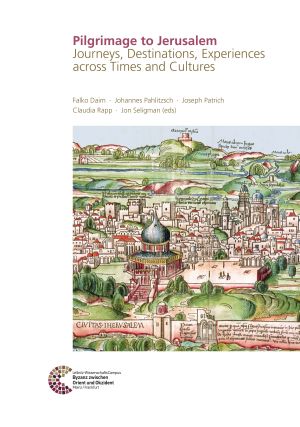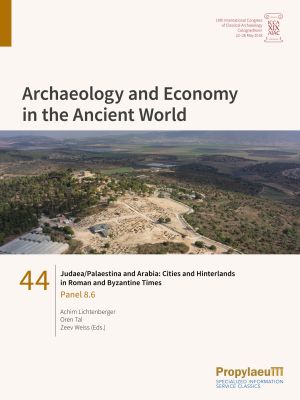Patrich, Joseph
Pilgrimage to Jerusalem. Journeys, Destinations, Experiences across Times and Cultures: Proceedings of the Conference held in Jerusalem, 5th to 7th December 2017
Jerusalem is a city holy to three world religions: Judaism, Christianity and Islam. From the early Byzantine period, Christian pilgrimage here and to other holy sites became a »mass phenomenon«. Thousands of Christians set out to holy sites in Palestine, Egypt and other places in order to physically experience salvation history and seek divine intervention in their lives. Numerous travel reports, pilgrim guides and other written sources highlight important aspects of pilgrimage. In addition, many well-preserved churches, monasteries, hostels and other buildings, as well as rich archaeological findings, provide us with a vivid and synthetic picture of the history of pilgrimage to the Holy Land.
Judaea/Palaestina and Arabia: Cities and Hinterlands in Roman and Byzantine Times: Panel 8.6
While already for several decades, survey archaeology and the investigationof city – hinterland relations have been in the focus of Mediterranean archaeology, the systematic implementation of this method in the southern Levant, is not commonly practiced. Only a few cities in this region were investigated by systematic intensive or extensive field surveys. This volume is dedicated to urban infrastructure and it aims at exploring the relationships between cities and their urban peripheries and hinterlands. It focusses on some southern Levantine major and secondary administrative centers of Judaea/Palaestina and Arabia under Roman and Byzantine rule (1st to 7th century CE). While investigating the historical geography of the southern Levant has a long tradition, today research questions have changed, and in many cases the study of micro-regions with their hinterlands are the focus of field projects. Such studies can only be undertaken in a systematic way, using multi-disciplinary approaches and high-resolution analyses looking at all kinds of zones of urban settlements and connections within the site and its periphery and hinterland. The contributions of this volume present a first attempt to look at urban settlements in the southern Levant from a comparative perspective.








